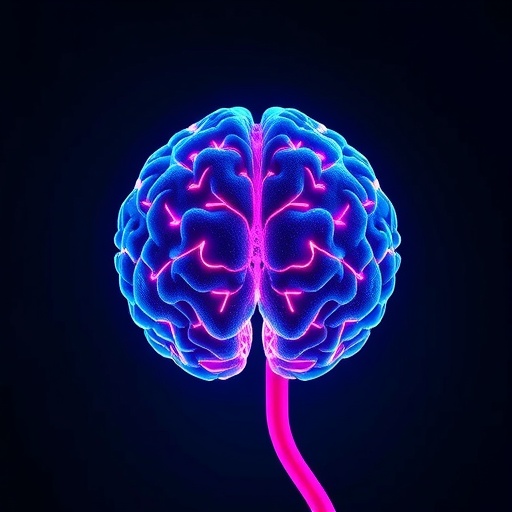In a groundbreaking study published in 2025, researcher Simon Baxendale delves deep into the intricate realm of neuroscience, aiming to elucidate the complexities surrounding sex differences in the human brain. Titled “Brain Sex: Differences That Do Not Differentiate,” this provocative work confronts long-held assumptions about how gender and sex identity influence cognitive functions and behaviors. With growing interest in both scientific and public communities, Baxendale’s work serves as a pivotal reference for understanding the underlying biology of gender differences and their implications for society.
At the core of Baxendale’s research is the assertion that while there are observable biological differences between male and female brains, these distinctions do not necessarily correlate with differences in behavior or capability. This perspective challenges the traditional binary views that have permeated both scientific inquiry and popular culture. The findings presented in this study highlight the need for a more nuanced conversation about gender and cognition, urging researchers and society to reconsider how these differences are framed.
The study employs advanced imaging techniques to analyze brain structures of cisgender males and females, revealing intriguing patterns of similarity and divergence. Key regions investigated include the hippocampus, amygdala, and prefrontal cortex—areas critical for memory, emotion, and decision-making. Baxendale observed that, despite structural variances, the functionality of these areas exhibited surprising congruence across genders. This revelation emphasizes that while their brains may look different, the manner in which they process information and respond emotionally is often indistinguishable.
One of the most striking aspects of the research is its methodological rigor. Baxendale utilized a robust sample size and diverse demographic representations, ensuring that the results are not only statistically significant but also broadly applicable. The implications are profound; as traditional gender roles continue to evolve, understanding the fluidity of brain function becomes increasingly essential for addressing societal issues related to gender equality and mental health.
Baxendale’s investigation also touches upon the intersection of culture and biology. The role of societal expectations and norms on behaviors typically associated with masculinity and femininity is a recurring theme. Through a lens free of gender bias, the study illustrates that many traits attributed to being male or female are not as inherently biologically rooted as previously believed. This realization opens the door to a broader understanding of human behavior that accommodates a spectrum of gender identities, moving beyond the binary classification that has dominated for centuries.
Importantly, Baxendale’s work underscores the necessity for educational systems and mental health professionals to adopt a more inclusive framework when addressing issues related to gender identity. If the brain demonstrates capabilities that transcend traditional gender boundaries, then educational strategies must reflect this understanding, providing all individuals with equal opportunities to flourish regardless of gender. Mental health practices too can benefit from this framework, recognizing that gendered behaviors are socially constructed rather than biologically predetermined.
The implications of these findings extend into the realm of therapy and counseling. Many therapeutic practices rely on gender norms to guide treatment approaches; as such, a re-evaluation of these practices is warranted if practitioners are to provide care that is responsive to individual experiences rather than preconceived notions of gender behavior. Therapists and counselors can consider these insights to support clients in navigating issues tied to identity with increased sensitivity and expertise.
Moreover, the discourse prompted by Baxendale’s research paves the way for further studies in adjacent fields. With neurodiversity gaining traction in scientific literature, the exploration of how brain differences manifest in conditions like ADHD, autism, and dyslexia is particularly timely. Recognizing that cognitive profiles do not strictly align with gender has the potential to reshape our understanding of these conditions, inspiring initiatives that advocate for varied approaches to learning and support.
The reception of Baxendale’s study has been multifaceted, with discussions erupting across social media platforms, academic forums, and public health discussions. Critics have raised points regarding the need for further inquiry and replication in different populations, emphasizing the importance of establishing a universal understanding of brain differences. Others laud the study for its pioneering stance, ushering in an era of increased sensitivity toward gender and cognitive diversity.
Despite the controversy, the prominence of Baxendale’s research signifies a crucial shift in the scientific community’s approach to gender and the brain. By advocating for a departure from outdated paradigms, this study promotes a scientific dialogue that honors diversity in human experience. Researchers are now encouraged to broaden their inquiries, considering factors beyond mere sex designation when exploring the brain’s complexities.
As the dialogue continues, Baxendale’s work stands as a cornerstone for future research endeavors. The call for more integrative and holistic exploration into brain sex differences cannot be ignored. The intersection of neuroscience, psychology, and sociology provides rich territory for exploration, with myriad questions remaining unanswered.
In conclusion, “Brain Sex: Differences That Do Not Differentiate” represents a significant milestone in the ever-evolving narrative of sex and gender within the scientific discourse. As we grapple with the implications of Baxendale’s findings, it becomes increasingly clear that the conversation about the brain and gender must move toward inclusivity and recognition of individual differences, embracing a more comprehensive understanding of what it truly means to be human in a diverse world. In an age where awareness and inclusivity create pathways for progress, studies like these will shape not only academic thought but also society’s collective awareness surrounding gender, cognition, and identity.
Subject of Research: The complexities of sex differences within the human brain and their implications for behavior and identity.
Article Title: Brain Sex: Differences That Do Not Differentiate
Article References:
Baxendale, S. Brain Sex: Differences That Do Not Differentiate.
Arch Sex Behav (2025). https://doi.org/10.1007/s10508-025-03306-z
Image Credits: AI Generated
DOI: https://doi.org/10.1007/s10508-025-03306-z
Keywords: Gender differences, brain sex, neuroscience, cognition, inclusivity, identity, mental health, education.




